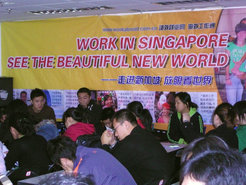Life Economy and Reproduction Migration

While livelihoods are sometimes sacrificed in order to save lives, as we have witnessed during COVID-19, life has itself been turned into a source of profit. Education, health care, and entertainment, all of which are about life instead of goods, are among the fastest-growing business sectors. Thus, this “life economy” is built around maintaining, reproducing and enhancing human life itself on a daily basis and across generations. The life economy emerges when life-making activities are detached from family and community, but at the same time it is inevitably re-embedded in regulations and ideologies.
The life economy complicates the narrative about the rise of “the East”, as seen, for example, in the mismatch between the global distributions of migration and production. While the West has attracted an ever-larger proportion of immigrants since the late 1990s, despite a decline in its share of the global GDP, China has experienced a rapid increase in outward mobility whilst becoming a new centre of production. The main motivation of this migration is not money, but access to the good life itself (clean air, food, care) even if this means experiencing financial loss. Will reproduction replace production in a global reconfiguration of economic relations?
The life economy disembeds reproductive activities from family, community, and nation and turns them into tradable services, investment targets, and sources of profit. Organs must be detached from the original body to acquire value, while care provided by family members has no monetary worth. Disembedding, in turn, necessitates bodily movement because life-making activities are, by definition, embodied. Caregivers must move in order to provide elderly care that is disembedded from family; students move when education is disembedded from national welfare. At the same time, the life-making economy, far from forming an unfettered free market, is re-embedded into social relations (e.g. intermediaries), norms (e.g. new forms of familism), and government regulations (which are particularly evident in marriage and birth migrations). As such, reproduction migration becomes deeply entangled with policies, politics, and ideologies. Disembedding creates economic value; re-embedding creates normative values.
